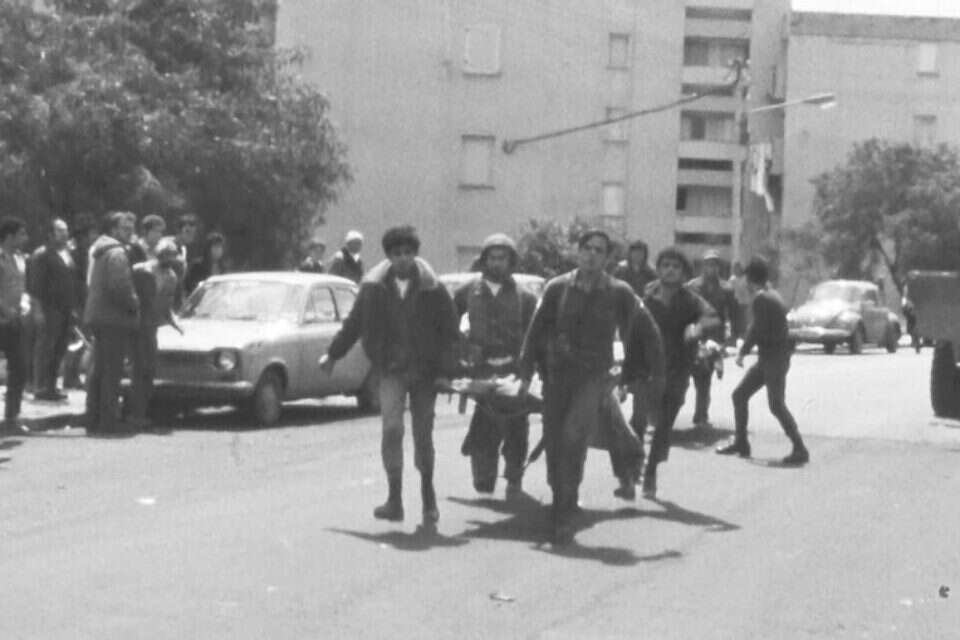On the morning of April 11, 1974, Yossi Shitrit returned to his home in Kiryat Shmona. His wife and four children were at home. The Passover vacation is in full swing.
In front of the building where he lived, at 15 Yehuda Halevi Street, dozens of soldiers and policemen gathered. Sheetrit quickly realized the scope of the incident: armed terrorists moving from apartment to apartment and massacring the residents. He saw his eldest daughter crying out from the window that two of her brothers had been murdered. An agitated Shitrit went on a rampage by the police, begging them to give him weapons so he could enter himself and save those who remained of his family. The reaction was brutal: he was forcibly taken away and imprisoned alone at the nearby health clinic until it was all over. When he left, his wife and three children were no longer alive. The force that burst in after more than 40 minutes found 18 dead and dozens wounded.
Shitrit's story is particularly tragic, because the establishment prevented him from doing the basic thing and taking care of his family's life. But this tragedy tells another story, about the power relations between Mizrahim in Israel and an opaque and racist establishment. "The House in Kiryat Shmona," a documentary by Lisa Peretz and Ruby Almalich, which aired this week on HOT8, deals for the first time with the attack, for which 60 years of archival confidentiality was imposed. It was the first time terrorists infiltrated an Israeli community to kill civilians, but the incident was omitted from public consciousness.
Grief-stricken Kiryat Shmona was left to its own devices and never recovered. 40 percent of senior residents left the city after receiving no assistance. Neither did the children. About a month later, 28 Israelis were murdered in the Maalot disaster, and a few months later, four civilians were murdered in an infiltration of an apartment building in Beit She'an. From now on, residents of frontier towns will no longer feel safe. The fact that the Mapainik establishment never saw them as part of the national narrative of border defense marked them more in the public discourse as cannon fodder than heroes. For them, the fear of abandonment became real.
In the development towns and neighborhoods, a different consciousness is beginning to awaken, especially after the Yom Kippur War. Thousands died in the war. The neighborhoods were filled with mourning houses. Hundreds of thousands were wounded in body, others in soul. After the shock came anger. The architects of victory from the Six-Day War, who were perceived as all-powerful, failed, lied, blamed each other. The ethos is fractured.
The way history is written and who writes it are subjects that are at the heart of the political war. Imposing confidentiality like the one imposed on the Kiryat Shmona massacre is a central part of controlling the narrative. What does not support the founding Ashkenazi ethos is better not told
In 1974, Sami Michael's book "Equal and More Equal" was published, reflecting the Mizrahi public's changing perspective on its history. Against the background of housing, employment, education, and security crises, spontaneous protests by young Mizrahi Jews broke out, and movements such as the Black Panthers and the Tent Movement intensified the protests. Workers' groups, mostly Mizrahim, shut down the economy 431 times between '73 and '76. The understanding that there are more equals has permeated the public discourse on both the right and the left.
Since 73, while Mapai has been weakening in peripheral communities and neighborhoods, Herut has only gotten stronger. In archival footage from the attack that appears in the film, one can already hear the cries of "Begin to power." Where Mapai failed, Begin succeeded. Even if at first hesitantly, he insisted on a common fighting ethos of Ashkenazim and Mizrahim. The consistency of his position matured in his seminal speech "Brothers, Warriors" (1981), which made Mizrahim part of the narrative of heroism and defense of borders.
The way history is written and who writes it are subjects that are at the heart of the political war. Imposing confidentiality like the one imposed on the Kiryat Shmona massacre is a central part of controlling the narrative. What does not support the founding Ashkenazi ethos is better not told.
The "Fighters of Atonement '73" ethos, which is revived in anti-government protests and is conspicuous by its monolithism, is a recent example of erasing the Mizrahim's role in fighting and defending, this time in the name of democracy. Mizrahim and rightists who took part in the wars do not embody the historical Mapai spirit, as reflected in the protest groups. Beyond the fact that the narrative alienates them, the very political use of their military past is alien to them.
Wrong? We'll fix it! If you find a mistake in the article, please share with us

